#indricotherium
Text
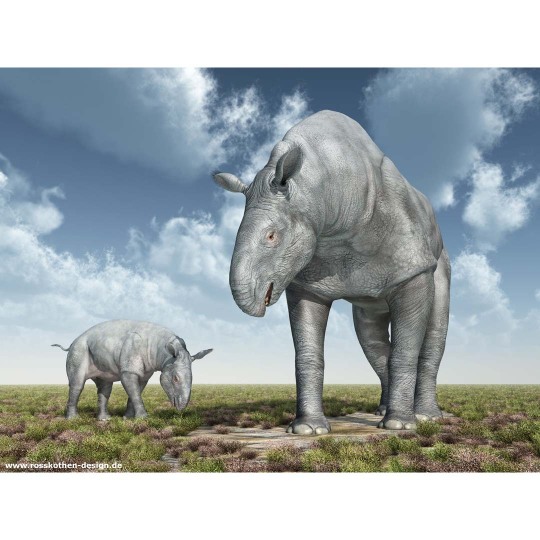
Adult and baby Paraceratheriums
#paraceratherium#rhinoceros#baluchitherium#indricotherium#dzungariotherium#hyracodontidae#rhinocerotoidea#paleontology#extinct#herbivore#animal#beast#mammal#giant#gigantic#massive#younganimal#animalbaby#animalchild#nature#powerful#wilderness#3d#prehistoricanimal
9 notes
·
View notes
Text

Monster Manual - Baluchitherium
You’ll see this creature or evidence of its presence before you get close. Though superficially similar to elephants, they’re closer to rhinoceroses in intelligence. Thankfully we’re small enough that they consider us like a sort of bipedal antelope rather than a predator. When startled an individual can stampede with the force of a herd of other animals. Can survive in arid regions and cross sandy deserts without issue. Do not hunt or approach if you don’t possess proper equipment.
--
One of the awkward things about the AD&D Monster Manual is that, because it was published in the 70's, some of the extinct creatures within it have shuffled names. When I was a kid, this creature was known as Indricotherium. Now it's Paraceratherium. Probably the largest mammal or mammalian monster that will feature here, but certainly not the biggest creature at all!
9 notes
·
View notes
Photo

How do dog breed subreddit counts compare to AKC popularity ranking?
by u/indricotherium
11 notes
·
View notes
Text
look i understand scientific names are more precise but sometimes i miss the days when you'd dig up some bones and announce your discovery to the world and suddenly everyone's talking about the fuckin
Beast of Baluchistan


50 notes
·
View notes
Text
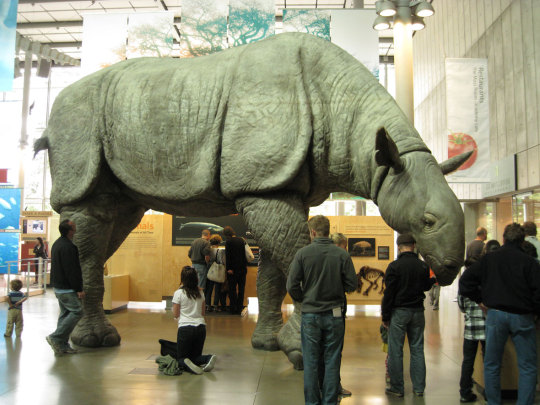
Here's a Line-Up of Prehistoric Beasts From the Rhino Family Tree - by Andy Jeffrey | Earth Touch News Network - Natural World - Evolution | 22nd/09/2015
#rampaging rhinos#rhinoceros#prehistoric rhino#indricotherium#megafauna#natural history#paleontology#paleoart
3 notes
·
View notes
Photo
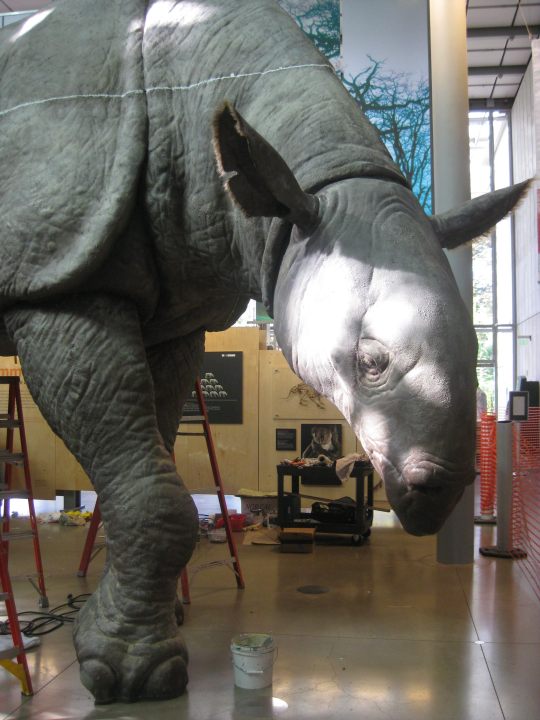

Assembling Indricotherium, California Academy of Sciences, San Francisco
3/19/2010
17 notes
·
View notes
Text
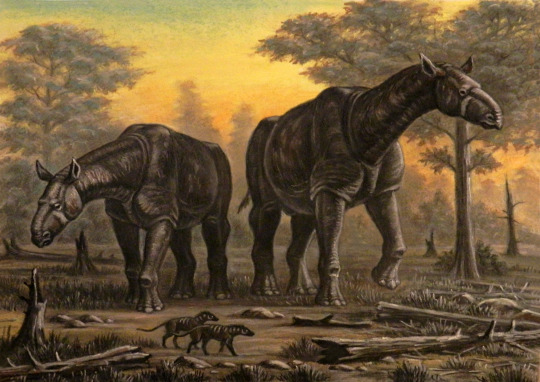
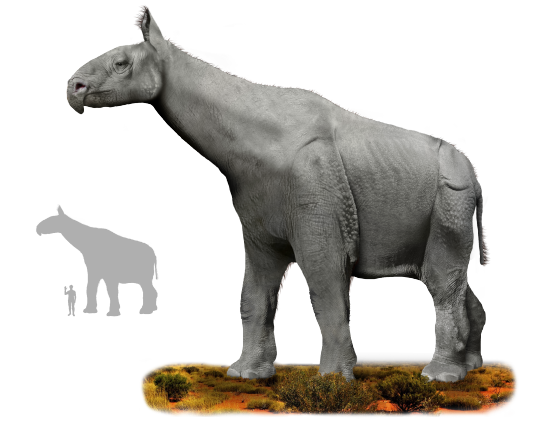

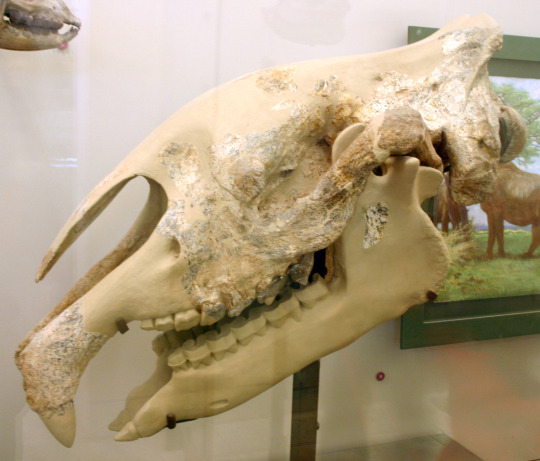
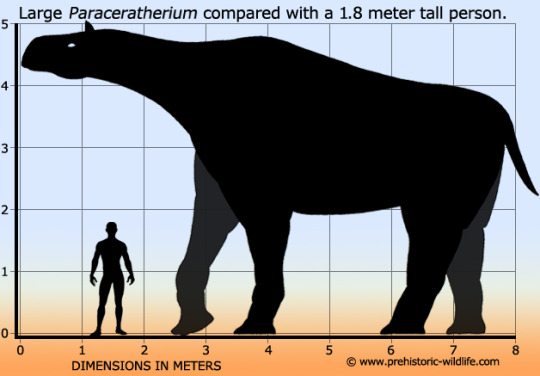
Paraceratherium
(temporal range: 34-23 mio. years ago)
[text from the Wikipedia article, see also link above]
Paraceratherium is an extinct genus of hornless rhinocerotoids belonging to the family Paraceratheriidae. It is one of the largest terrestrial mammals that has existed and lived from the early to late Oligocene epoch (34–23 million years ago). The first fossils were discovered in what is now Pakistan, and remains have been found across Eurasia between China and the Balkans. Paraceratherium means "near the hornless beast", in reference to Aceratherium, the genus in which the type species P. bugtiense was originally placed.
The exact size of Paraceratherium is unknown because of the incompleteness of the fossils. The shoulder height was about 4.8 metres (15.7 feet), and the length about 7.4 metres (24.3 feet). Its weight is estimated to have been about 15 to 20 tonnes (33,000 to 44,000 lb). The long neck supported a skull that was about 1.3 metres (4.3 ft) long. It had large, tusk-like incisors and a nasal incision that suggests it had a prehensile upper lip or proboscis (trunk). The legs were long and pillar-like. The lifestyle of Paraceratherium may have been similar to that of modern large mammals such as the elephants and extant rhinoceroses. Because of its size, it would have had few predators and a long gestation period. It was a browser, eating mainly leaves, soft plants, and shrubs. It lived in habitats ranging from arid deserts with a few scattered trees to subtropical forests. The reasons for the animal's extinction are unknown, but various factors have been proposed.
The taxonomy of the genus and the species within has a long and complicated history. Other genera of Oligocene indricotheres, such as Baluchitherium, Indricotherium, and Pristinotherium, have been named, but no complete specimens exist, making comparison and classification difficult. Most modern scientists consider these genera to be junior synonyms of Paraceratherium, and it is thought to contain the following species; P. bugtiense, P. transouralicum, P. huangheense, and P. linxiaense. The most completely-known species is P. transouralicum, so most reconstructions of the genus are based on it. Differences between P. bugtiense and P. transouralicum may be due to sexual dimorphism, which would make them the same species.
1 note
·
View note
Text

Indricotherium. Zdeněk Burian.
via
221 notes
·
View notes
Note
Hey Mark, I've sent a few birthday requests for trivia on trilobites lately and I think they've fallen under the radar. Maybe trilobite trivia is hard to come by! So instead I'll refer to some different paleo trivia and see if *you* knew about it.
The creatures called 'Indriks' on Ravnica are probably based on the mythical Indrik of Russian legend, as I know Ravnica was originally meant to have some Russian myth flavor, but their appearance in art is *clearly* based on the Indricotherium, also called Paraceratherium, a gigantic giraffe-like hornless rhino that actually lived in Eurasia about 30-20 million years ago, and whose scientific name was based on the legends of the Indrik. It may have been the largest terrestrial mammal ever. Not sure if that was a deliberate choice or if you were even aware yourself, but my favorite thing about Ravnica is seeing this titantic extinct mammal walking around like its the Oligocene epoch.
So how much of that were you aware of?
I was aware of none of it. Thanks for sharing.
Happy Belated Birthday! (Sorry for it falling under the radar.)
75 notes
·
View notes
Text

Adult and baby Paraceratheriums
#paraceratherium#rhinoceros#baluchitherium#indricotherium#dzungariotherium#hyracodontidae#rhinocerotoidea#paleontology#extinct#herbivore#animal#beast#mammal#giant#gigantic#massive#younganimal#animalbaby#animalchild#nature#powerful#wilderness#3d#prehistoricanimal
2 notes
·
View notes
Text


While we're talking about prehistoric megafauna, can we have a moment of awe for Indricotherium / Paraceratherium / Baluchitherium, the largest known land mammal to walk the Earth?
5 notes
·
View notes
Text

Indricotherium is an extinct relative of the rhinoceros, also known as one of the largest mammals in the history of the planet, weighing as much as three or four adult African elephants. He lived in the forests of Central Asia between 34 and 23 million years ago.

Canvas wall art Extinct rhinoceros Paraceratherium. Nature wall art for farmhouse decor, cottage decor, lake house decor, dining room art, bathroom art, decor reading nook, best friend gift, gift for man, grandpa gift.
This exclusive and unrepeatable painting can be purchased here:
#apartmentdecor#artdecor#artworks#artworksbyartemholubiev#bathroomart#bestfriendgift#canvasposter#canvasprint#canvaswallart#colorfulwallart#contemporaryart#cottagedecor#decorreadingnook#digitalwallart#diningroomart#dinosaurart#dormdecor#extinctanimal#extinctanimals#extinctrhinoceros#forfarmhousedecor#fossil#gallerywallset#giftforman#giftsforgeeks#grandpagift#housewarminggift#illustration#indricotherium#lakehousedecor
0 notes
Text
Sannaja
Zapomeňte na slony a plejtváky. Na třetihorní Paraceratherium (jemuž se ještě nedávno říkalo Indricotherium), na druhohorní titanosaury. Největší zvíře, které kdy nosila tahle planeta, je perská (ovšem v Tibetu žijící) Ṣannāja. Už jen doupě téhle potvory má šířku jedné legue (nevím kterého měrového systému, perského nebo britského nebo španělského, prostě něco přes pět kilometrů).
Čtěte dál...
0 notes
Text
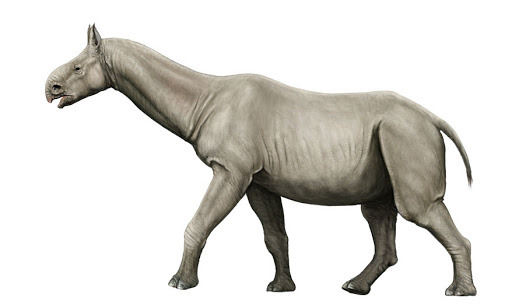
Paraceratherium
#rampaging rhinos#rhinos#rhinoceros#prehistoric rhino#indricotherium#paraceratherium#prehistoric art#prehistoric animals#prehistoric life
0 notes
Video
youtube
INDRICOTHERIUM REWARD BATTLE STAGE 64 II Jurassic World The Game II Dino...
0 notes
